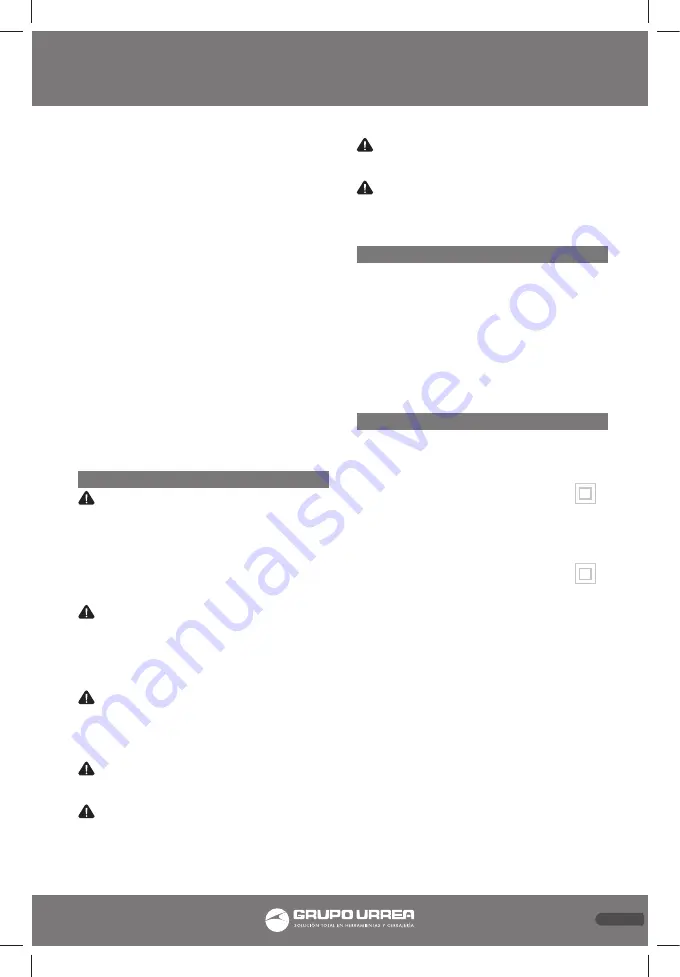
13
E N G L I S H •
User's manual
2. Choose the drilling function when drilling
in soft masonry (tile, flooring, soft brick, lime
cement, or cinder block),.
3. When drilling in a smooth surface, attach
adhesive paper at the drilling location in order
to prevent the bit from gliding.
DRILLING IN WOOD AND PLASTIC
1. Start the drill slowly, and increase speed
gradually.
2. When using twist drill bits, pull the bit out of
the hole frequently in order to clear chips from
the bit flutes.
3. Use low speeds for plastic that has a low
melting point.
DRILLING IN METAL
1. Lubricate drill bits with cutting oil when
drilling in iron or steel.
2. Do not use a lubricant when drilling in
nonferrous metals, such as copper, brass or
aluminium.
MAINTENANCE
WARNING: Before each use, inspect the
hammer drill, ON/OFF trigger switch, and cord
for any damaged, missing, or worn parts. Check
for loose screws, misalignment or binding of
moving parts, or any other condition that may
affect the operation. If abnormal vibration or
noise occurs, turn the tool off immediately, and
have the problem corrected before further use.
WARNING: Before cleaning or perform-
ing any maintenance, the tool should be
unplugged from the power supply. Using com-
pressed air may be the most effective cleaning
method. Always wear safety goggles when
cleaning tools with compressed air.
WARNING: Do not let brake fluid, gasoline,
petroleum-based products, penetrating oil,
etc., come in contact with plastic parts. These
substances contain chemicals that can damage,
weaken or destroy plastic.
WARNING: When servicing, use only identi-
cal replacement parts. Use of any other parts
may create a hazard or cause product damage.
WARNING: Use only accessories that are
recommended for the specific model by the
manufacturer. Accessories that may be suitable
for one tool may become hazardous when
used with another tool.
WARNING: Check extension cords before
each use. If damaged, replace immediately.
Never use tool with a damaged cord.
WARNING: To ensure safety and reliability,
all repairs should be performed by a qualified
service technician.
TROUBLESHOOTING
MOTOR DOES NOT START
Tools is not plugged in: Check that all cords are
plugged in.
Fuse: Check the time-delayed fuse or circuit
breaker.
DRILLING IS DIFFICULT
Bit’s damaged: Replace the bit.
Wrong bit: Use the proper bit.
TECHNICAL DATA
VOLTAGE-FREQUENCY
NO LOAD SPEED
CHUCK CAPACITY
POWER
WEIGHT
120 V ~ 60 Hz
(0 - 2 800) r/min
1/2” (13 mm)
700 W
2 kg (4,4 lb)
VOLTAGE-FREQUENCY
NO LOAD SPEED
CHUCK CAPACITY
POWER
WEIGHT
120 V ~ 60 Hz
(0 - 2 800) r/min
1/2” (13 mm)
700 W
2 kg (4,4 lb)
RM612C
RM612CK
RM612C-RM612CK manual.indd 13
15/03/17 15:00


































